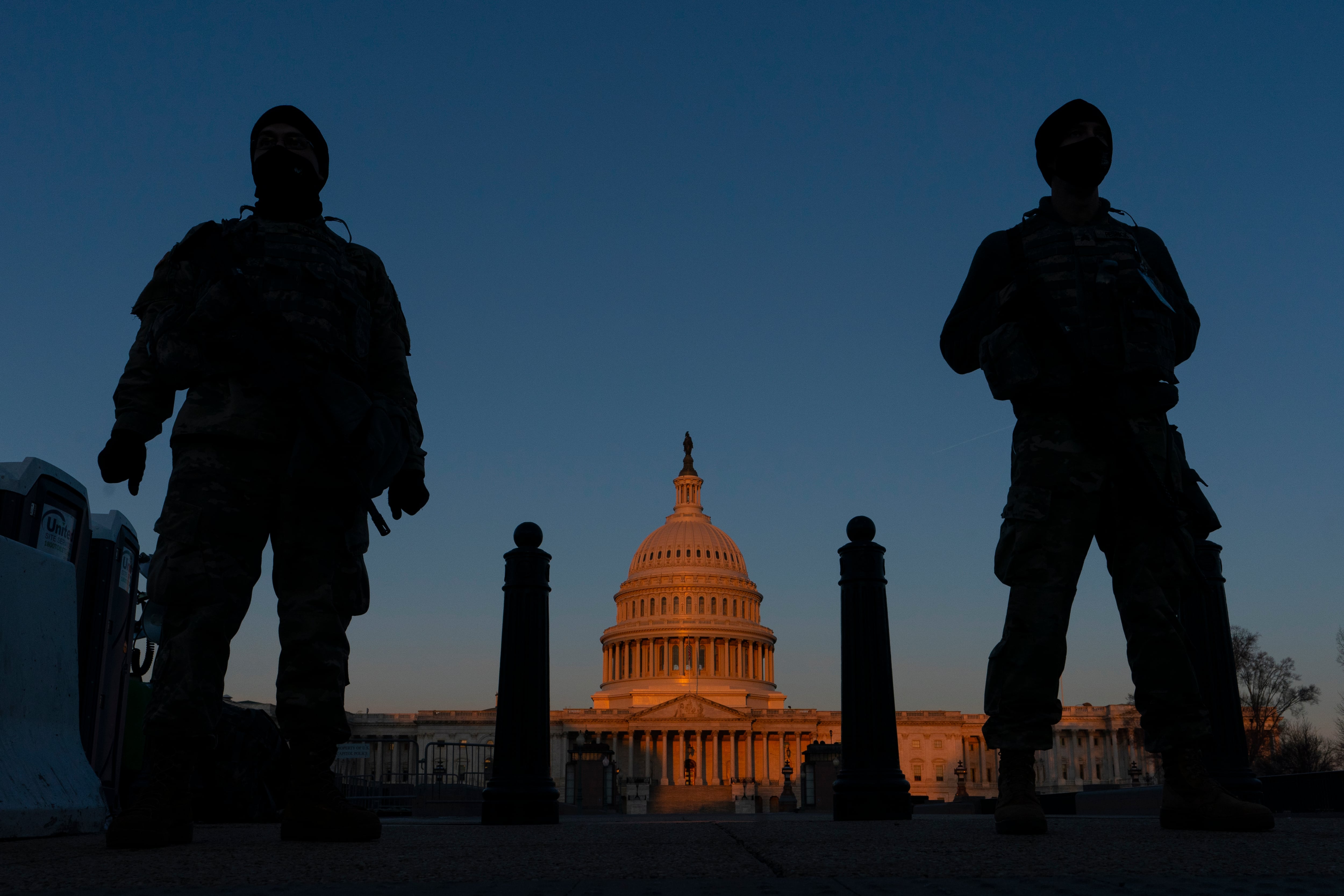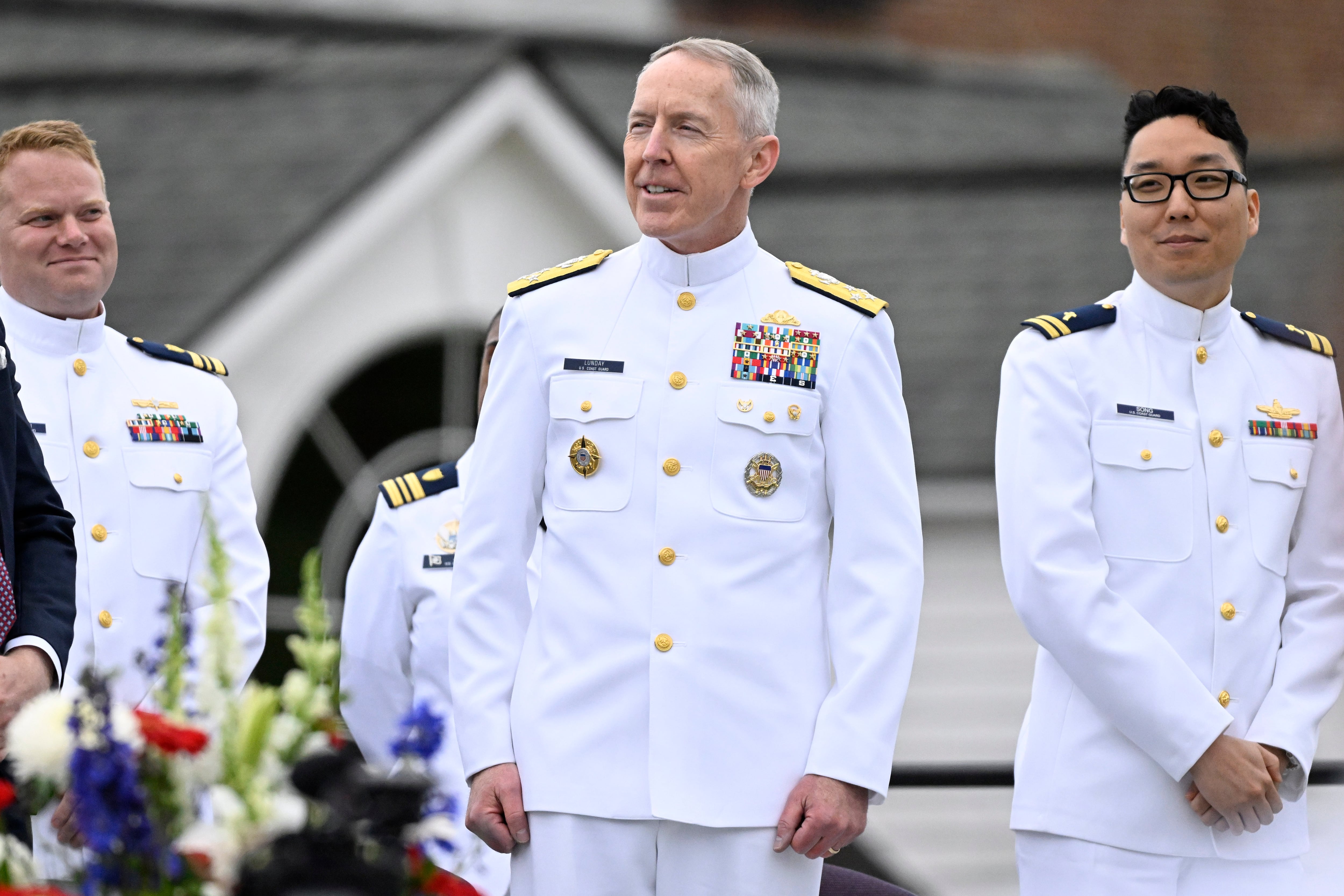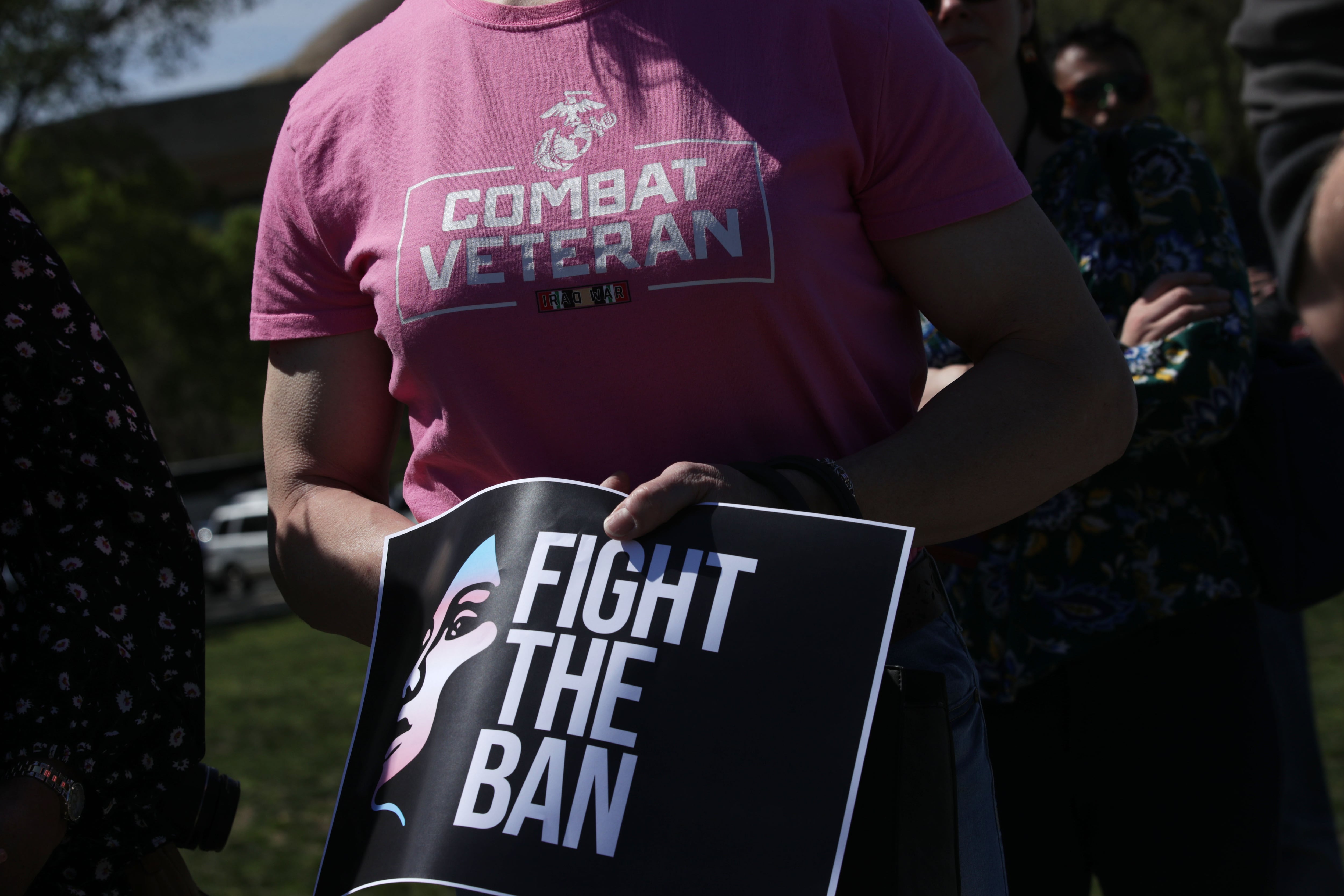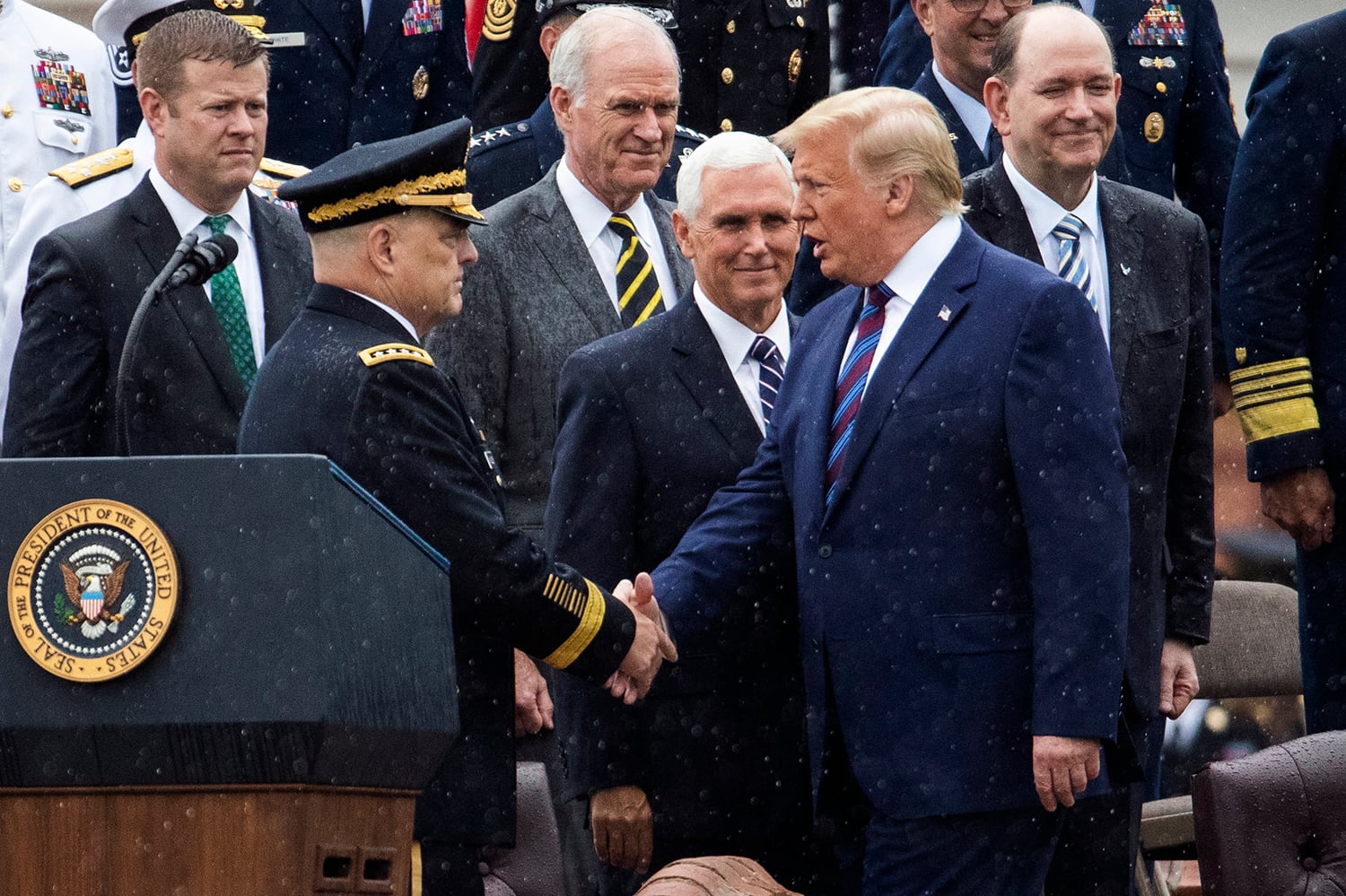An Army nursing specialist was working inside a hospital at Fort Johnson in the spring of 2021 when he was instructed by a supervisor to gather for a training session about extremism.
It was just weeks after the Jan. 6 riot at the U.S. Capitol, where some veterans and service members joined a chaotic protest aimed at thwarting a peaceful transfer of presidential power. In response, the Pentagon had mandated a one-day training on domestic extremism, with units across the country left to decide the best way to convey the message.
At the Louisiana hospital, the specialist and five others filed into the downstairs labor and delivery unit, where a major led them through a slide presentation. The session lasted one hour, and then the workers went back to their regular duties. Nearly three years later, the specialist can’t remember much of the training, other than the gist: “Don’t do terrorism.”
“If I learned anything new, I’ve already forgotten it,” he said.
An Air Force first sergeant in Georgia also struggles to recall much of the training he received, but he remembers how the slides were delivered — and the response. His unit’s stand-down occurred as part of a regular briefing that takes place before 7 a.m.
Like with other mandatory trainings required by the Defense Department, the director breezed through it, and the 100 or so airmen in attendance were eager to be done, the first sergeant said. The stand-down was completed in just 15 minutes, during which fellow airmen complained about it being a waste of time. A few even fell asleep, he said.
“If a leader doesn’t display, ‘I believe in what I’m delivering to you,’ then you’re going to have chaos, which is what we had,” he said. “It was an epic failure and didn’t meet the goal of what DOD wanted presented.”
Now, nearly two years after the training, much of it described in forgettable terms, the stand-down has been the subject of debate. Thomas Spoehr, a scholar with the conservative Heritage Foundation, called it unwarranted, and Rep. Matt Gaetz, R-Fla., suggested it “hurt the military.”
Defense Secretary Lloyd Austin argued that the training prompted productive discussions, while former Joint Chiefs Chairman Gen. Mark Milley previously defended the need for troops to understand white rage and learn about factors that incited rioters to attack the Capitol.
Troops, meanwhile, described the effort as half-hearted, disorganized and no different than the kind of training they may receive about sexual harassment and assault prevention. One sailor thought it was less rigorous than other stand-downs he’d sat through in the wake of safety mishaps.
In the days and weeks after the training, there was little follow-up discussion about extremism prevention. A soldier called it a “one and done” training and remarked on the lack of messaging about the topic compared to the Army’s Equal Opportunity or Sexual Harassment/Assault Prevention programs.
In the time since, the stand-down has come to represent what some critics of President Joe Biden view as his administration’s attempt to politicize the military. It is also one of the only concrete steps the Pentagon has taken to address extremism since Jan. 6.
Today, extremism prevention is the target of conservatives in Congress who don’t want to see any more time or money spent on the issue.
Years of debate
As of September, 193 individuals with military backgrounds had been charged or convicted for their roles in the breach of the U.S. Capitol, according to the National Consortium for the Study of Terrorism. Veterans and service members account for about 17.5% of all defendants charged in the Capitol attack so far, while they comprise only 7% of the U.S. population.
In the days immediately following the attack, Austin called for a stand-down to address extremist ideologies within the ranks. According to training materials made public by the Pentagon, the stand-down was meant to remind service members of the oaths they took to defend the Constitution. It was also meant to convey a message that troops could be booted if caught advocating for extremist ideologies, and serve as a warning about being targeted by extremist organizations for recruitment.
According to the curriculum, the department was seeing an increase in concerning behavior among troops at the time, as well as a rise in reports about suspicious activities. The training noted that while service members do have protections under the First Amendment, they are also held to a higher standard because of their access to classified information and military equipment. Training materials cited a 1974 Supreme Court decision that First Amendment protections could be applied differently to service members because of the necessity for obedience and discipline.
The instructional period called on troops to reject certain activities, including fundraising, demonstrating, or recruiting for gangs and other organizations determined to be “detrimental to good order, discipline, or mission accomplishment,” as well as those considered “incompatible with military service.” Espousing extremist or discriminatory doctrine would have consequences, the training materials said.
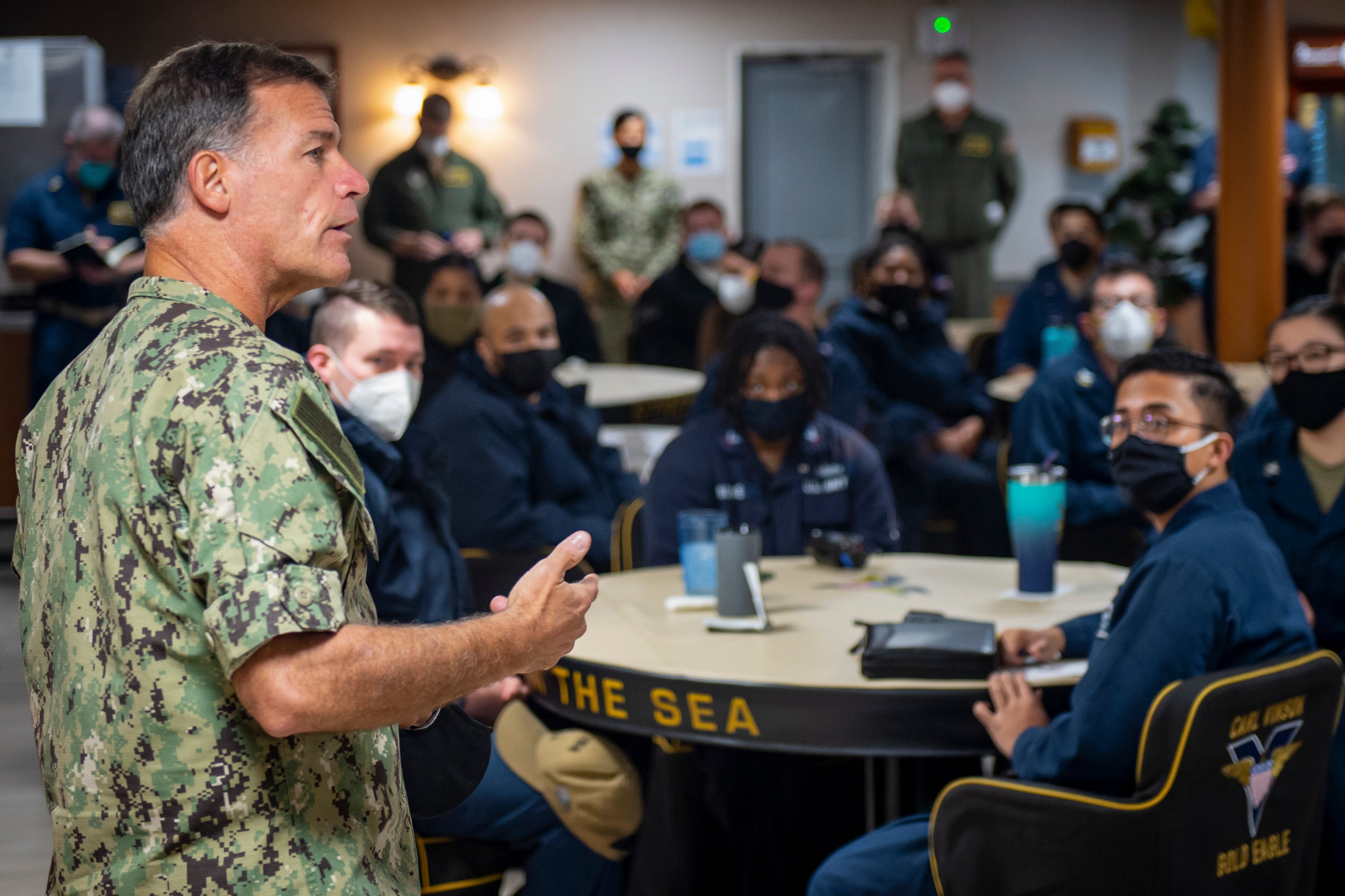
Some Democrats and extremism prevention experts have defended Austin’s decision to initiate a stand-down, arguing that even a small number of extremists in the U.S. military could pose an outsized problem. The National Consortium for the Study of Terrorism and Responses to Terrorism released a study this summer that found 451 people with military backgrounds committed extremist offenses from 1990 through 2022. Of those, 170, or nearly 38%, either plotted or followed through with a deadly terrorist attack, making extremists with military backgrounds 2.4 times more likely to be classified as mass fatality offenders compared to those who had never served.
Anthony Brown, a former House lawmaker from Maryland and now the state’s attorney general, argued that Austin “rightly made this issue a priority.”
“We must not let our military continue to be a training ground for extremist organizations,” Brown said. “And we cannot allow members of those extremist organizations to simultaneously be members of the armed forces.”
While the stand-down was applauded by some, a handful of Republicans blasted it as a farce and called it a means for the Biden administration to push their agenda. Sen. Dan Sullivan, R-Alaska, described it as a “witch hunt” for extremists.
The stand-down has become a familiar talking point among lawmakers who decry a rise of “wokeness” in the military, referring to what they see as radically progressive policies. The increasingly prominent argument about the military being too “woke” has slowed negotiations on the annual defense policy bill, led to the promotion blockade of about 400 military nominees and emerged as a talking point among those vying to become the Republican candidate in the 2024 presidential election.
Rep. Jim Banks, R-Ind., criticized the stand-down as time taken away from honing service members’ war-fighting capabilities. In September, Banks said expunging “wokeism” from the U.S. military was now his top mission in Congress.
“‘Wokeism’ will eat our country inside-out if we let it, and we’ve got to stop it from taking over and transforming the military,” Banks said.
As debates about the stand-down persist, Military Times sought the input of troops who experienced the training firsthand. Dozens responded, each requesting anonymity while sharing their observations. Respondents represented four military branches and underwent training at an array of locations, from aboard a missile cruiser to inside the Pentagon, deployed to Afghanistan and at installations across the country.
While some participants interviewed by Military Times saw no reason for the training and suggested it ignited division among the ranks, others thought it was a good initiative that didn’t go far enough. Even if political beliefs and experiences differed, most respondents were equally frustrated about how the training was carried out. A dozen described the stand-down as leadership merely “checking a box,” while others called it “perfunctory,” a “waste of time” or compared it to a school assembly.
“It was largely an exercise in futility,” said one retired Air Force colonel who was working as a deputy mission support group commander at the time of the training. “We’re checking boxes, not providing value.”
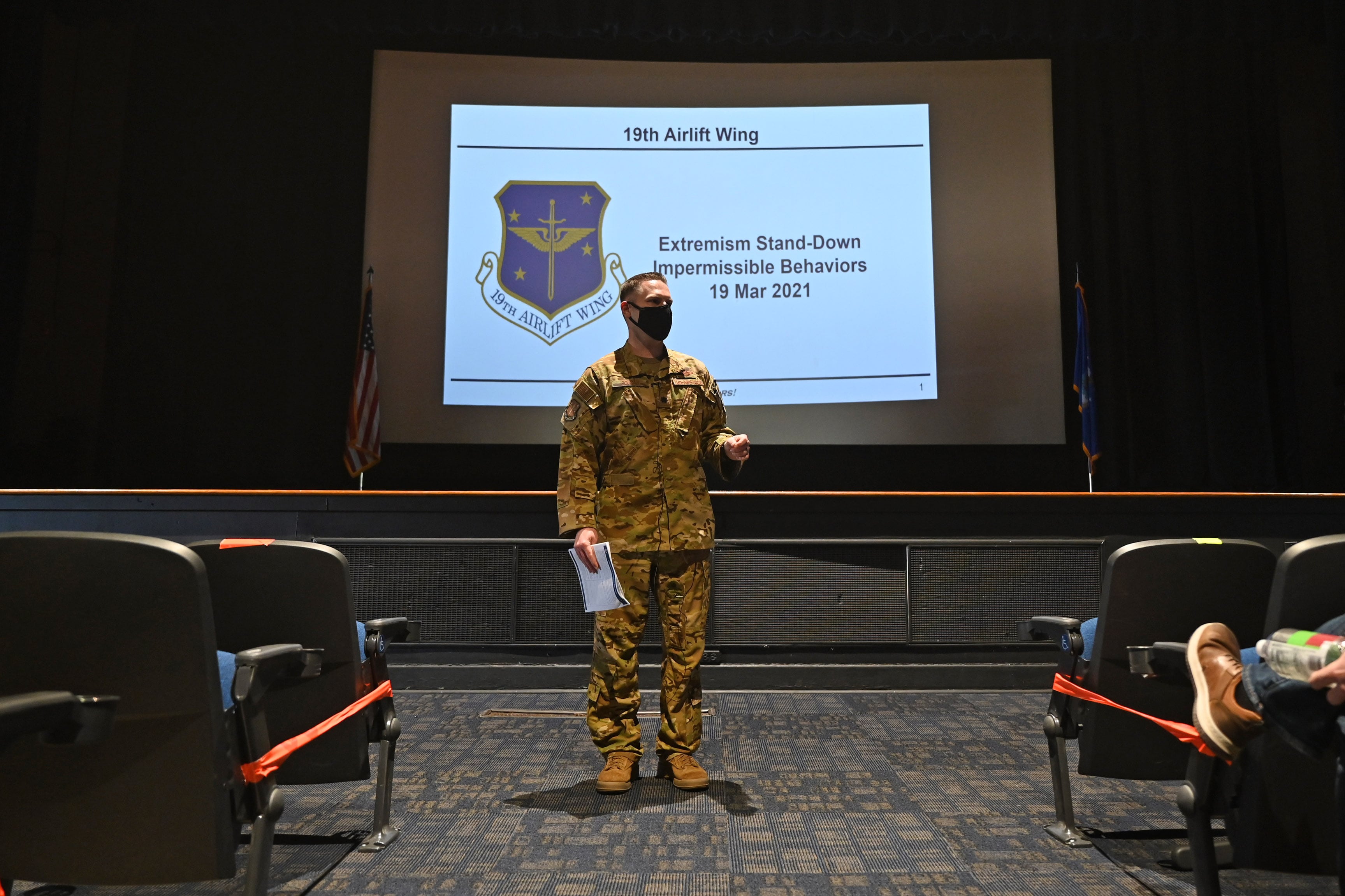
Amy Cooter, a research fellow with the Center on Terrorism, Extremism, and Counterterrorism, heard similar feedback about the stand-down during interviews she conducted with veterans this year for a study about the radicalization of service members.
“Most seemed to think much more was needed — numerous interviewees so far have talked about how they think the military needs more frequent and standardized instruction,” Cooter said. “Additional and quality direct instruction is likely needed both early and throughout service and also at time of separation.”
Experts who study extremism and political violence generally agree that the stand-down was a good idea and a positive first step toward rooting out such behaviors. However, the follow-through has fallen short, multiple experts told Military Times.
And now, some lawmakers are trying to put an end to any work still underway.
A ‘lack of transparency’
Stevan Weine, a psychiatry professor at the University of Illinois, wrote a paper about the best practices for addressing violent extremism and has been studying the subject for the past decade. The stand-down was a “one-shot approach,” he said, instead of the sustained effort that should be in place.
Violent extremism is a relatively new field of study. There isn’t a set of scientifically proven methods for preventing extremism, but there are some agreed-upon best practices, Weine said.
According to a study funded by the Justice Department, people are more likely to turn to extremist movements when they’re dealing with issues like failed relationships, unemployment, mental health concerns and drug or alcohol abuse, or if they have a history of traumatic experiences or criminal involvement.
To address extremism in the ranks, the Pentagon should teach its leaders how to spot service members at risk for radicalization, Weine added. When that happens, there should be a clear process to intervene.
“I could imagine a longer training that’s not only telling people what to be aware of but giving them the tools to address this challenge ... and the skills to differentiate between a person who might be just sharing some ideas online, versus a person who’s posing a threat,” Weine said. “You have to make sure this is firmly on the radar of different levels of leadership within the military. I think it takes more than a one-time talk to help people to incorporate that into how they think and how they behave.”
Following the stand-down, Austin created a Countering Extremism Working group that, by December 2021, unveiled a host of recommendations, only pieces of which have been implemented two years later. The Defense Department did adopt a new policy recommended by the working group, meanwhile, that expanded the previous definition of extremist activities prohibited by the military. Those activities now include online interactions that promote terrorism, as well as rallies, fundraising or organizing in support of extremist ideologies.
The Pentagon also added information about extremism into pre-separation counseling that service members undergo as they’re leaving the military. The contents of the new slides, shared with Military Times, encourage exiting service members to “guard against attempts to be radicalized, continue to take a stand against extremism organizations, and report suspicious activities to proper authorities.”
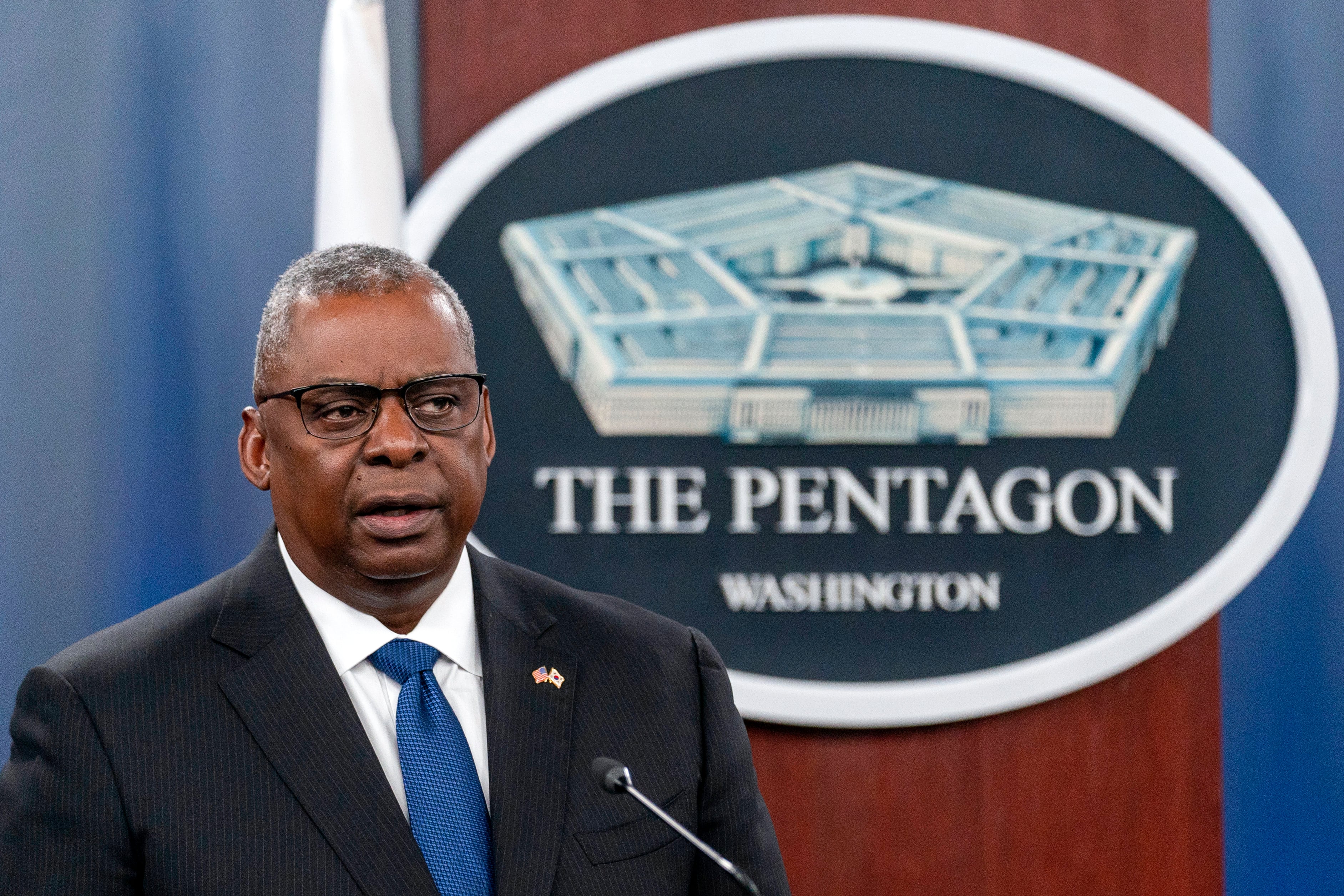
While the Pentagon has taken those incremental steps, multiple news outlets reported this summer that the department abandoned its anti-extremism efforts — and most of the working group’s recommendations. A Pentagon spokesperson did not respond to inquiries from Military Times this summer and again in November about whether the working group had ended its efforts.
In response to concerns about the efforts concluding, a Pentagon official briefed reporters in June that the department was working to implement more training that would focus on how the military’s core values run counter to extremist ideologies. A Pentagon spokesperson didn’t respond to a request for comment in November about whether the training had been completed.
Organizations that work to prevent violent extremism aren’t sold on the Pentagon’s sincerity. In September, seven veterans and military family advocacy groups, as well as 29 anti-extremism groups and three individual extremism experts, sent a letter to Austin, criticizing him for the lack of transparency about the Pentagon’s efforts.
“As close observers in this field, we understand the urgency of this threat and the impact it has on service members, veterans, and their families,” the letter reads. “We urge the DOD to continue the essential work you have begun in addressing white supremacy and other forms of extremism in the military — and to inform Congress and the American public about progress made towards fulfilling these critical commitments and recommendations.”
That letter wasn’t the first plea sent to Austin to continue the anti-extremism work he started. Back in April, Heidi Bierich, co-founder of the Global Project Against Hate and Extremism, said the working group had “fizzled” and sent a letter to Austin, asking the agency about any continued attempts to address extremism. The group’s other co-founder, Wendy Via, told Military Times in November that she believed military leaders had succumbed to political pressure.
“Some good ideas came out of the working group, but there’s a complete lack of transparency — an unwillingness to share the status of this,” Via said. “I think the political pressure is overwhelming.”
The watchdog organization American Oversight went so far as to sue the Defense Department for documents that could provide insight into the military’s anti-extremism work. The group filed two lawsuits in June, asking for the release of any studies the Pentagon might have initiated concerning incidents of white supremacist, white nationalist, white separatist, far-right, alt-right or pro-Nazi activities or ideologies among service members.
According to court documents, the Pentagon was working as of mid-November to hand over thousands pages of documents to American Oversight. It remained uncertain at the time of publication whether the documents would illustrate progress in rooting out extremism or — as some experts in the field had suspected — that politics had shut those efforts down.
Stand-down ‘not enough’
Despite whether the Pentagon ended its anti-extremism efforts in secret already, some members of Congress were working in November to make certain all efforts would cease.
As of publication, lawmakers were expected to negotiate the 2024 defense policy bill when they returned from the Thanksgiving recess. The House and Senate each passed their own versions of the bill earlier this year, and together they included 22 proposals that target the military’s anti-extremism initiatives, as well as its diversity, equity and inclusion programs.
One measure included in the House bill would prohibit any federal funds from going to the Countering Extremism Working Group.
Rep. Mark Alford, R-Mo., who introduced the measure, said it was key to “eliminating the ‘wokeness’ in the military and the unnecessary extremism working group.”
Alford is one of the lawmakers to criticize Biden’s administration for pushing “woke” policies into the armed forces, blaming the extremism stand-down in 2021 for having tarnished the military’s reputation.
“As one of your first acts, Mr. Secretary, you put our military — every single member, active duty and reserve — to mandatory training to root out extremists,” said Sen. Tommy Tuberville, R-Ala., at a congressional hearing in March. “That sent a message.”
Some service members who shared their stand-down experiences with Military Times agreed with those sentiments. A Navy chaplain who was asked to review the stand-down curriculum as it was being developed believed the messaging ostracized conservatives. A senior Army enlisted advisor in Tennessee said the training — and anything not related to military readiness — wasn’t worth doing.
“The amount of things that I’ve seen in the military that were done for politicians and not for soldiers — this, to me, was just another example of that,” the senior enlisted advisor said. “This training did not increase readiness or increase the lethality of the U.S. military, and that’s what I’m focused on.”
While many service members and elected officials perceived the stand-down as political or criticized how it was carried out, the Pentagon’s decision was the right one, said numerous experts, including Weine, Via and Cooter.
Allison Jaslow, CEO of Iraq and Afghanistan Veterans of America, said the military was in a unique position to tackle the problem “head on.”
“It’s hard to overstate the value of awareness — of an entire community of people having to acknowledge out in the open what we might otherwise prefer to overlook,” Jaslow said.
Weine agreed, arguing it was key for the Pentagon to clearly state that troops’ involvement in extremist activities was not acceptable. The stand-down was the Pentagon “making an investment in prevention,” Weine said.
“I had no problem with what the secretary did,” Weine said. “The problem is, it was not enough.”
This story was produced in partnership with Military Veterans in Journalism. Please send tips to MVJ-Tips@militarytimes.com.
Nikki Wentling is a senior editor at Military Times. She's reported on veterans and military communities for nearly a decade and has also covered technology, politics, health care and crime. Her work has earned multiple honors from the National Coalition for Homeless Veterans, the Arkansas Associated Press Managing Editors and others.
